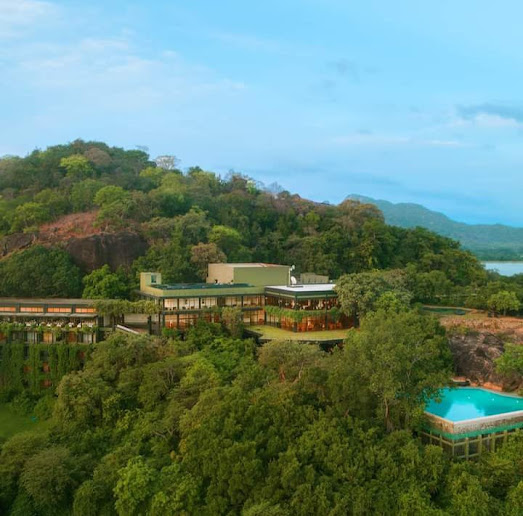Kandalama hotel, located in the Dambulla of Sri Lanka, is a luxurious property built by the famous Sri Lankan architect, Geoffrey Bawa. The hotel was constructed on a hillside, overlooking the beautiful Kandalama Lake and the lush green forests that surround it. Kandalama is known for its stunning architecture, eco-friendliness, and top-notch amenities. In this article, we will delve into the rich history of Kandalama hotel, explore its unique features, and discover why it is considered one of the best hotels in Sri Lanka.
History of Kandalama Hotel
The construction of Kandalama hotel began in the late 1990s and took four years to complete. The project was initiated by the Aitken Spence Group, a leading hospitality and tourism company in Sri Lanka. The group commissioned the renowned architect, Geoffrey Bawa, to design and build the hotel. Bawa was known for his unique style of architecture that blended traditional Sri Lankan design with modern elements. His designs were heavily influenced by the natural surroundings of the building site, and he always aimed to create structures that harmonized with their environment.
The construction of Kandalama hotel was a challenging task, mainly because of its location on a steep hillside. The hotel was built on a terraced slope, which required extensive excavation and grading work to create a flat surface for the building. Additionally, the site was prone to soil erosion and landslides, which required the engineers to implement several soil stabilization techniques to ensure the safety and stability of the structure.
Despite these challenges, Kandalama hotel was completed in 1995 and quickly gained international recognition for its unique architecture and eco-friendly features. The hotel has won several awards over the years
Architecture and Design
The architecture of Kandalama hotel is a testament to Geoffrey Bawa's unique design philosophy. The building features a series of interlinked pavilions that are arranged in a staggered fashion along the hillside. The pavilions are connected by open-air walkways and courtyards, creating a sense of fluidity and interconnectedness between the different parts of the building.
The design of Kandalama hotel is heavily influenced by the natural surroundings of the site. The building is designed to blend seamlessly with the landscape, with its walls, roofs, and floors made from locally sourced materials such as wood, stone, and clay tiles. The use of natural materials gives the building a warm, earthy feel that is in harmony with its surroundings.
One of the most distinctive features of Kandalama hotel is its green roof. The hotel's flat roofs are covered with a layer of soil and vegetation, creating a living garden that helps to regulate the temperature and reduce the heat island effect. The green roof also provides habitat for birds and other wildlife, further enhancing the hotel's eco-friendly credentials.
The interior design of Kandalama hotel is equally impressive. The rooms and suites are spacious and elegantly decorated, with wooden floors, high ceilings, and large windows that offer stunning views of the surrounding landscape. The furniture and fixtures are made from high-quality materials and are designed to blend seamlessly with the natural surroundings.
Sustainability and Eco-Friendliness
Kandalama hotel is one of the most eco-friendly hotels in Sri Lanka, with a strong focus on sustainability and environmental conservation. The hotel's design and construction were guided by the principles of sustainable architecture, with an emphasis on using local materials and minimizing waste.
The green roof is one of the most visible symbols of the hotel's commitment to sustainability. The roof helps to reduce the hotel's energy consumption by regulating the temperature inside the building. It also helps to reduce the hotel's carbon footprint by absorbing carbon dioxide from the atmosphere.
















